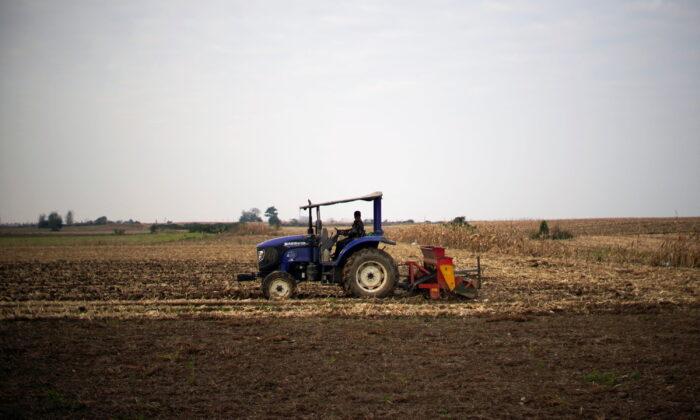BEIJING—China’s COVID-19 curbs are disrupting the supply of fertilizer to the country’s northeastern bread basket just a month away from spring planting, threatening this year’s corn and soybean crops if not resolved soon.
Farmers typically have fertilizer prepared in early April before applying to fields later in the month during planting. But China’s worst outbreak of COVID-19 since the pandemic began two years ago have triggered strict controls on movement of people and goods, sharply slowing deliveries.
Fertilizer producers, dealers, analysts, and associations said rules requiring truck drivers to take COVID-19 tests every 24 hours, a need to obtain special passes to deliver goods and factory suspensions due to local COVID-19 cases are all contributing to tight supplies.
“Production of nitrogen fertilizer and fertilizer preparation for spring planting has been greatly affected,” the China Nitrogen Fertilizer Industry Association said this week.
Jilin, China’s second-largest corn-growing province, is among the hardest hit after local authorities banned movement of people across the provincial border, and within, from March 14 as COVID-19 cases surge.
“Fertilizer supply here couldn’t be tighter,” said a Jilin-based dealer surnamed Yan, who is short more than 2,000 tonnes of the critical crop nutrient for his customers.
The bottleneck comes on top of record fertilizer prices, driven up by strong global demand, high energy costs, and sanctions on major producers Russia and Belarus.
China’s wholesale fertilizer index (CFCI) is 40 percent higher than a year ago.
That had discouraged many dealers from building stocks in recent months, catching them short in their busiest sales period.
Yao, a dealer in Liaoning, said he’s short about a third of his needs.
The transport curbs are especially problematic for the northeast, which does not have enough local fertilizer production and relies on deliveries from other provinces.
The northeast’s Heilongjiang, Jilin, and Liaoning provinces and Inner Mongolia region produce more than 40 percent of China’s corn and half its soybeans.
Prices of corn and soybeans are hovering at record highs.
Top fertilizer producer Sinofert Holdings still had about 80,000–100,000 tonnes of product waiting to be shipped, executive director Ma Yue told reporters on an earnings call last week, even after getting about 1,000 “green passes” for trucks.
The special passes to deliver critical goods take time to process and must be renewed daily. It has also become increasingly difficult to find drivers willing to work under the restrictions, dealers said.






Friends Read Free